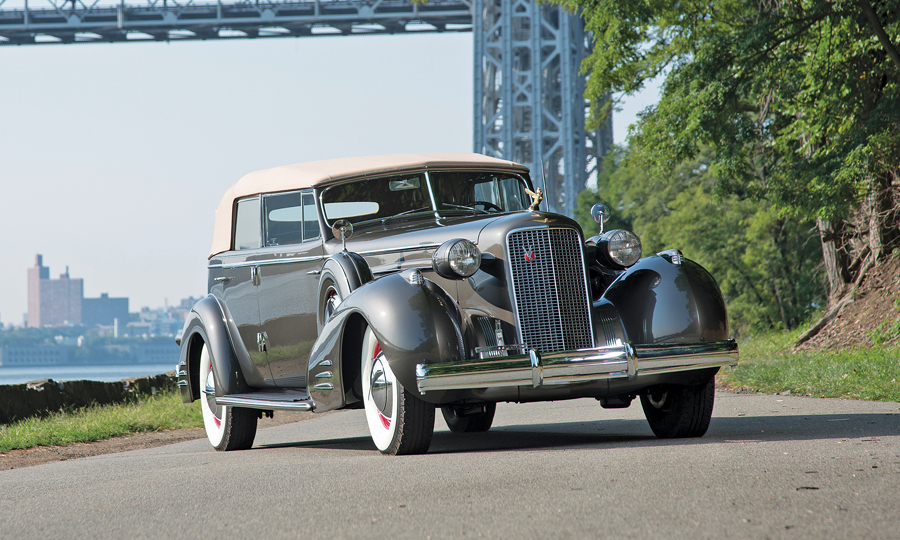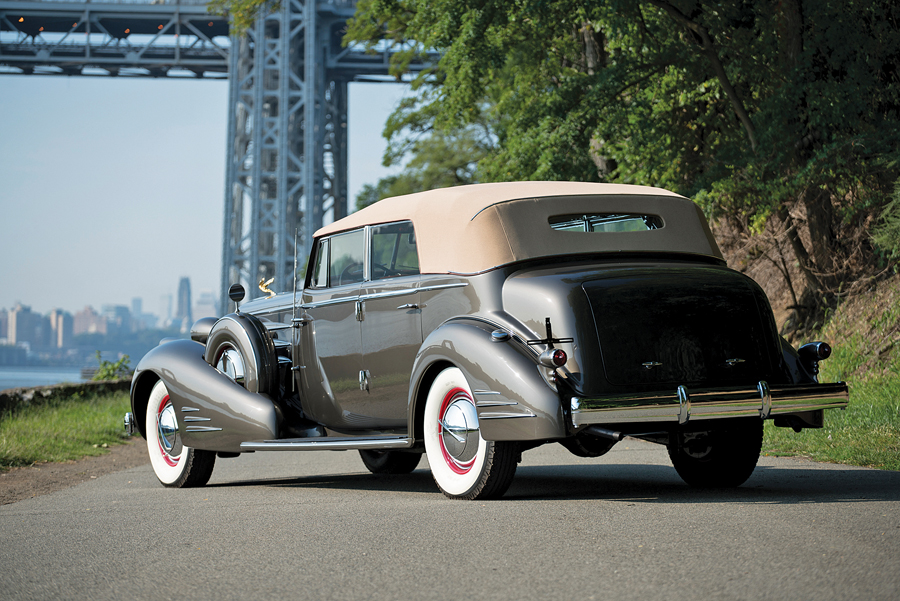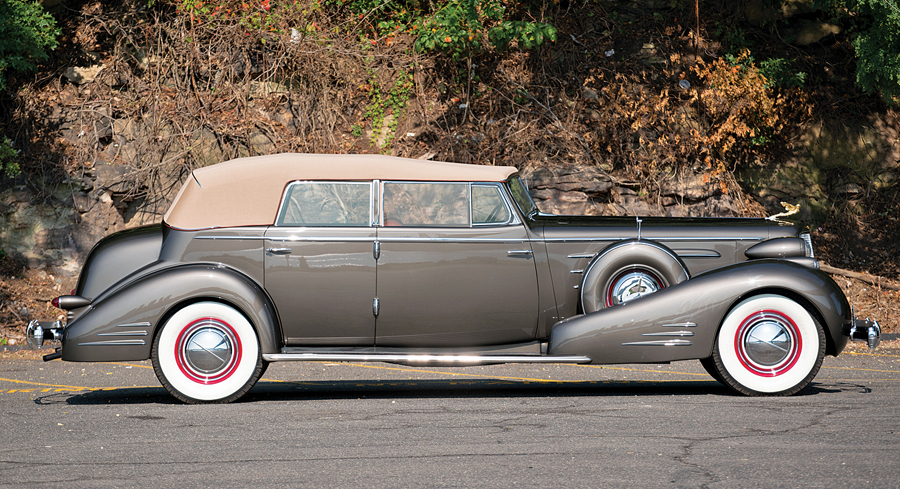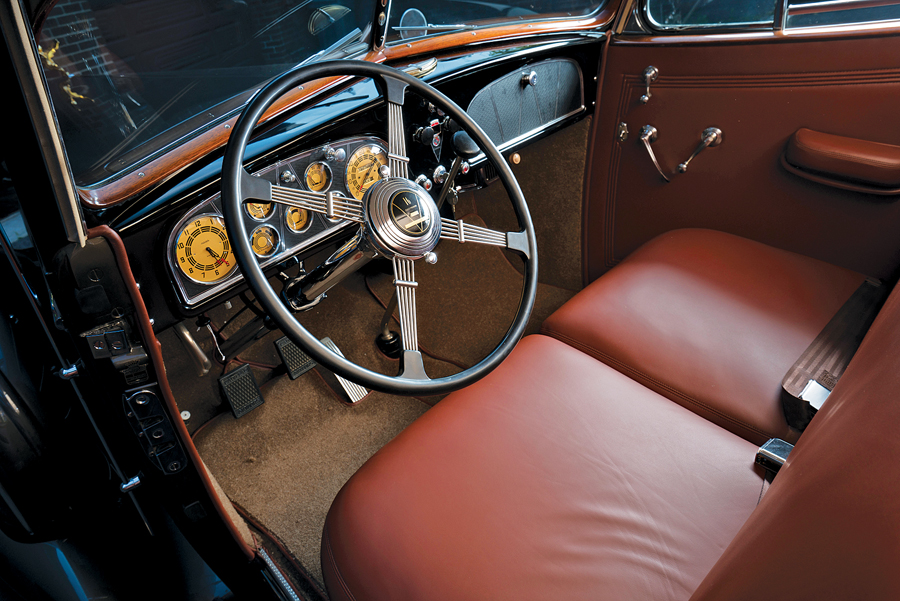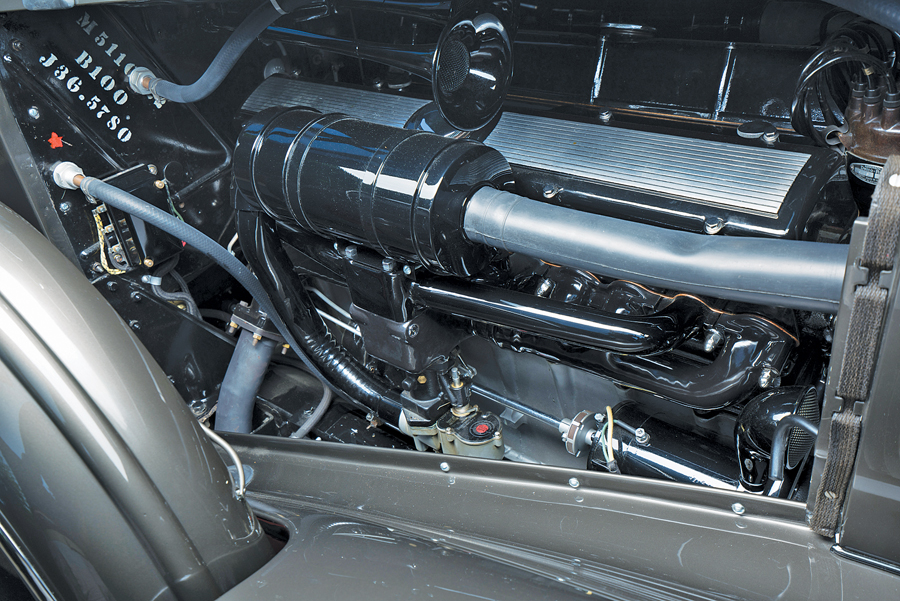SCM Analysis
Detailing
| Vehicle: | 1936 Cadillac V16 Convertible Sedan |
| Years Produced: | 1936 |
| Number Produced: | 52 (total 1936 V16 production) |
| Original List Price: | $6,800 |
| SCM Valuation: | $710,000 |
| Distributor Caps: | $2,000 — if you can find one |
| Engine Number Location: | Right side of crankcase |
| Club Info: | Classic Car Club of America |
| Website: | http://www.classiccarclub.org |
| Alternatives: | 1933 Marmon Sixteen, 1936 Packard 1408, 1936 Pierce-Arrow Twelve |
| Investment Grade: | B |
This car, Lot 161, sold for $715,000, including buyer’s premium, at RM Sotheby’s auction at Hershey, PA, on October 5, 2017.
The Cadillac V16 was developed under a veil of secrecy and intrigue that would rival a Jason Bourne novel.
In the mid-1920s, it became apparent to the powers that be at Cadillac that the company’s well-seasoned V8 could not properly power the increased size and weight of the new, luxurious car bodies planned for their upscale clients.
Numerous alternatives were considered, including supercharging and increasing the V8’s cylinder size, but they all had unacceptable consequences.
Increasing the number of cylinders to 16 with a displacement of 452 cubic inches was determined to be the most desirable alternative. Also, importantly, stress in the transmission and axles was no greater than with the V8, which meant the existing units could be utilized without modification.
A secret project
The V16 engine was developed in a “skunk works” environment with designs, blueprints and purchase orders referencing a “Bus or Coach” project. Fleetwood, a General Motors company, constructed hand-built prototype bodies that allowed the new engine to receive hundreds of thousands of miles of testing with no one the wiser.
It was common knowledge at the time that several of the upscale producers, including Packard, Pierce-Arrow, Franklin and Lincoln, were developing V12 engines.
Cadillac hired Owen Milton Nacker to spearhead their V12 engine efforts. The V12 engine project was, however, a decoy to hide their 16-cylinder effort, which was introduced six months before the Cadillac V12. The intrigue continued!
Engine as art object
The elegant V16 car was introduced with radio ads on December 21, 1929 — just two months after the Wall Street crash.
The V16 engine was outfitted with glossy enamel, porcelain, polished aluminum and chrome. The wires were hidden in the valley between the overhead valves. The ribbed cylinder heads were polished.
The V16 engine was virtually silent due to hydraulic zero-lash valve adjusters, and the only sound at idle was the spark of the contact points.
The V16 car was offered with an impressive array of 20 body styles, and that quickly expanded to 70. Priced at $5,500 to $7,500, the car was a true work of art.
Under the Great Depression’s clouds
The first showing was staged at the factory on December 22, 1929, with enthusiastic results. Cadillac intended that the first cars would arrive at dealers in April, but by April 8, 1930, the 1,000th V16 had been shipped, with 2,219 leaving the dealer showrooms in 1930.
Only 750 or so were sold in 1931, with about half being left over from 1930. Heavy discounts were necessary to move the expensive inventory. This car was introduced under the looming and menacing cloud of the Great Depression.
As the Depression deepened, it was not prudent for those whose financial fortunes had been spared to flaunt their good fortune, and the luxury-car market suffered.
The Packard Twelve was reintroduced in 1932, and only 311 were sold, while Cadillac’s total production was only 3,173 cars for all of 1933.
If the General Motors umbrella had not protected Cadillac, it is doubtful the company would have survived the deep chill of the Great Depression.
Our subject V16 convertible sedan
In 1936, only 52 Cadillac V16 cars were produced, with half being limousines. The cars were now offered with Fisher’s Turret Top all-steel top, even though they were still bodied by Fleetwood.
There were six convertible sedans produced, and our example is remarkable in that it has been driven only 17,000 miles and is very original.
In the 1940s, the car was modified with stretched running boards and built-in headlamps. The sidemounts were also eliminated. In 1949, it was donated to the Chicago Museum of Science and Industry, where it resided until 2008.
The new owner took the car out of the museum and commissioned a freshening at a prominent restoration shop. The car was returned to its original configuration.
Remarkably, some of the original build chalk markings were still present, and original paint samples were on the firewall. The car was presented at the 2015 Pebble Beach Concours d’Elegance, where it received a class award.
The market for Full Classics
There are some who maintain that the market for Full Classics is waning, as those who aspire to ownership are aging and no longer interested.
A long list of recent sales of significant Full Classics refutes this position, as younger buyers appreciate the elegance and luxury that these cars represent.
This 1936 Cadillac V16 sold for strong — but not unexpected — money.
As this special car is an elegant part of automotive history, we can only hope that the new owner feels compelled to share his magnificent automotive treasure. Well bought. ♦
(Introductory description courtesy of RM Sotheby’s.)
